Unit 4 A&P: Gustation and Eye Structure Overview
1/65
There's no tags or description
Looks like no tags are added yet.
Name | Mastery | Learn | Test | Matching | Spaced |
|---|
No study sessions yet.
66 Terms
What is gustation?
The sense of taste, involving the detection of chemicals by chemoreceptors in the oral cavity.
How does gustation interact with other senses?
Gustation is aided by the olfactory sense.
What structures possess taste buds?
Papillae on the anterior surface of the tongue and the soft palate.
What is the structure of taste buds?
Onion-shaped structures containing gustatory cells and support cells.
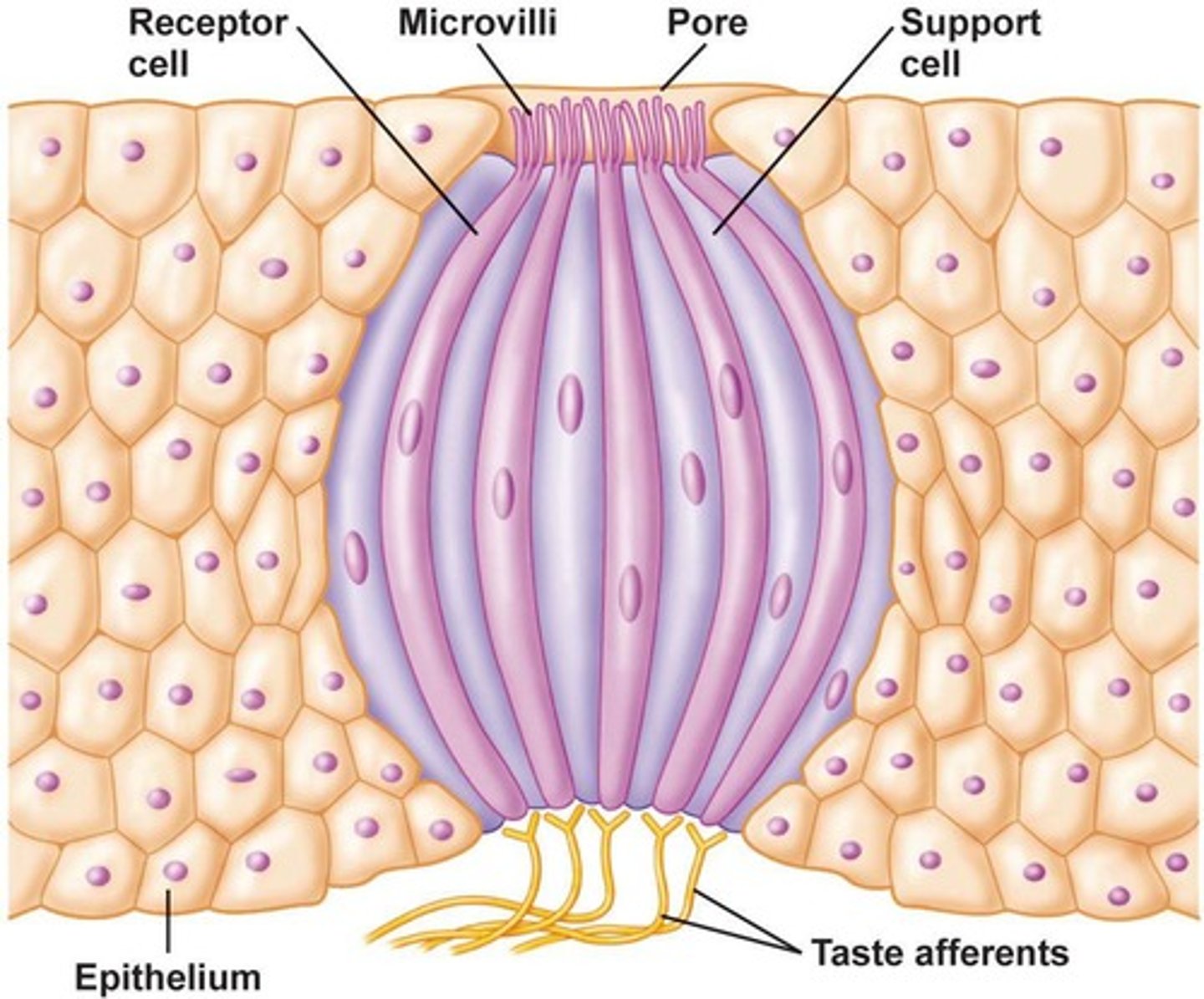
What are gustatory cells?
Taste receptor cells housed within taste buds.
What are the four types of gustatory cells?
Type I (salt), Type II (sweet, umami, bitter), Type III (sour), Type IV (stem cells).
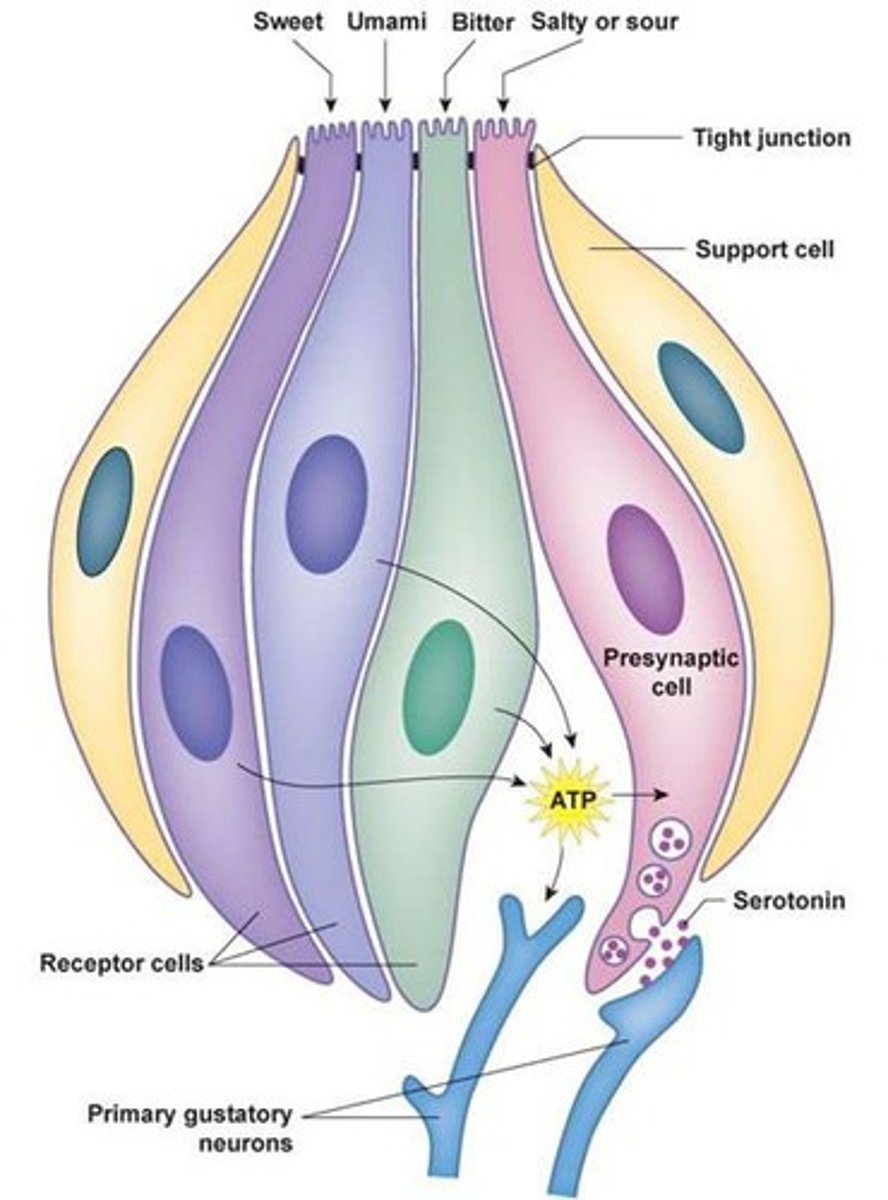
What are the characteristics of foliate papillae?
Leaf-like structures located on the lateral boundary of the tongue, not well developed in humans, functioning mostly in infancy.
What are filiform papillae?
Thread-like, short and spiky structures on the anterior 2/3rd of the tongue that do not house taste buds but detect texture.
Describe circumvallate papillae.
Surrounding structures forming an inverted 'V' with the greatest concentration of taste buds, located at the boundary between anterior and posterior tongue.
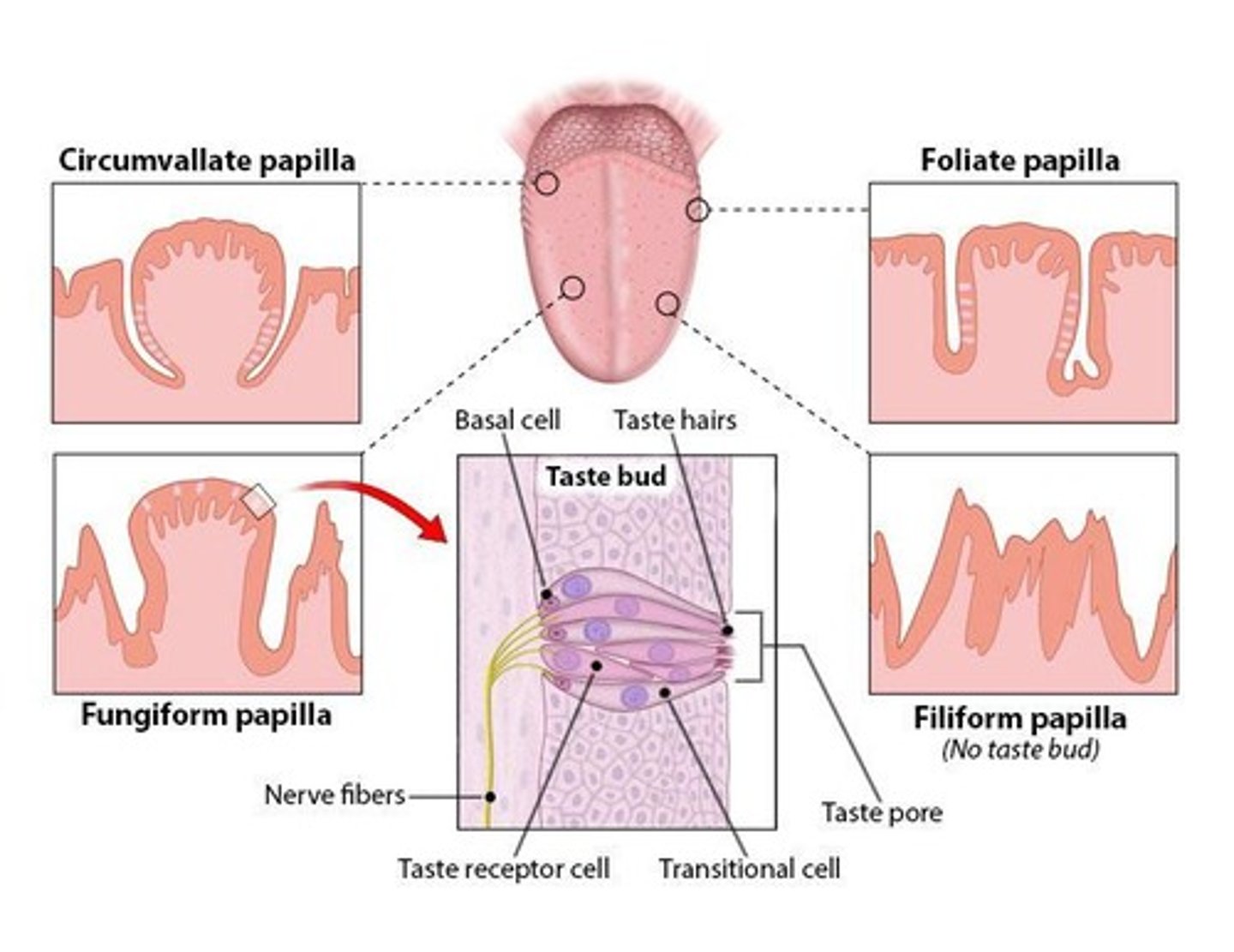
What are fungiform papillae?
Mushroom-shaped structures primarily on the anterior margin of the tongue, containing a few taste buds.
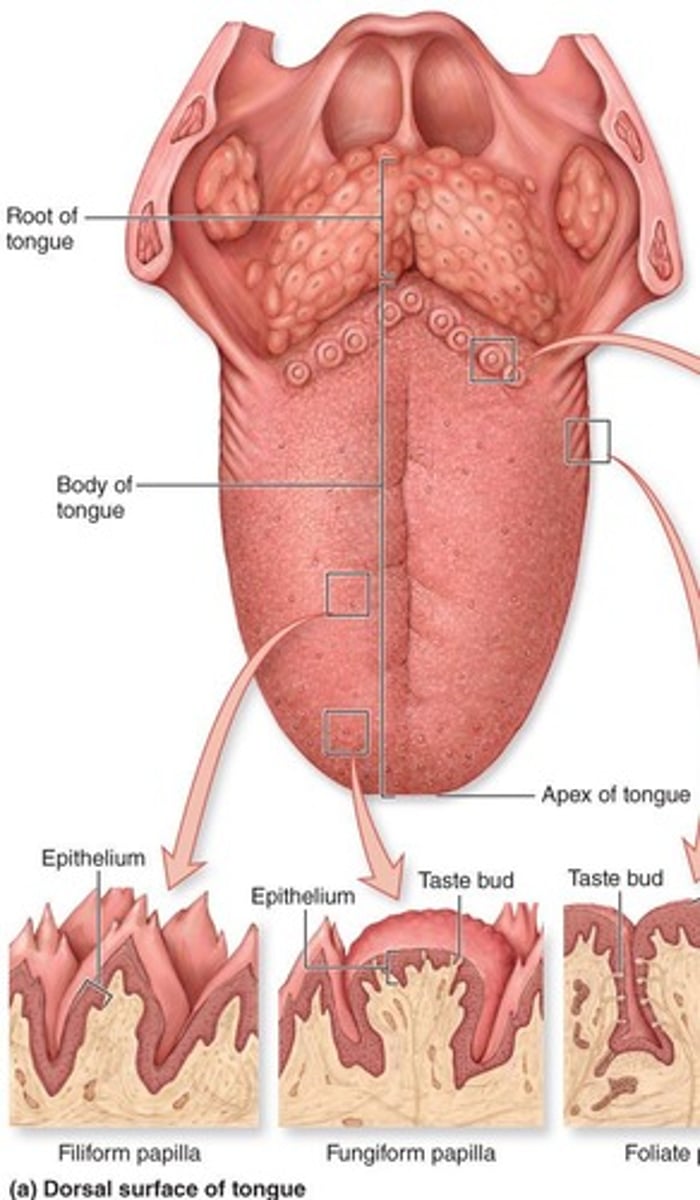
What are taste pores?
Openings in taste buds that allow dissolved tastants to contact gustatory cells.
What is the life span of a taste receptor cell?
Approximately 10 days.
What is the role of gustatory microvilli?
Dendritic endings of gustatory cells that extend through taste pores and contact saliva.
How do Type I gustatory cells respond to stimuli?
They respond to Na+ ions, which are associated with salty tastes.
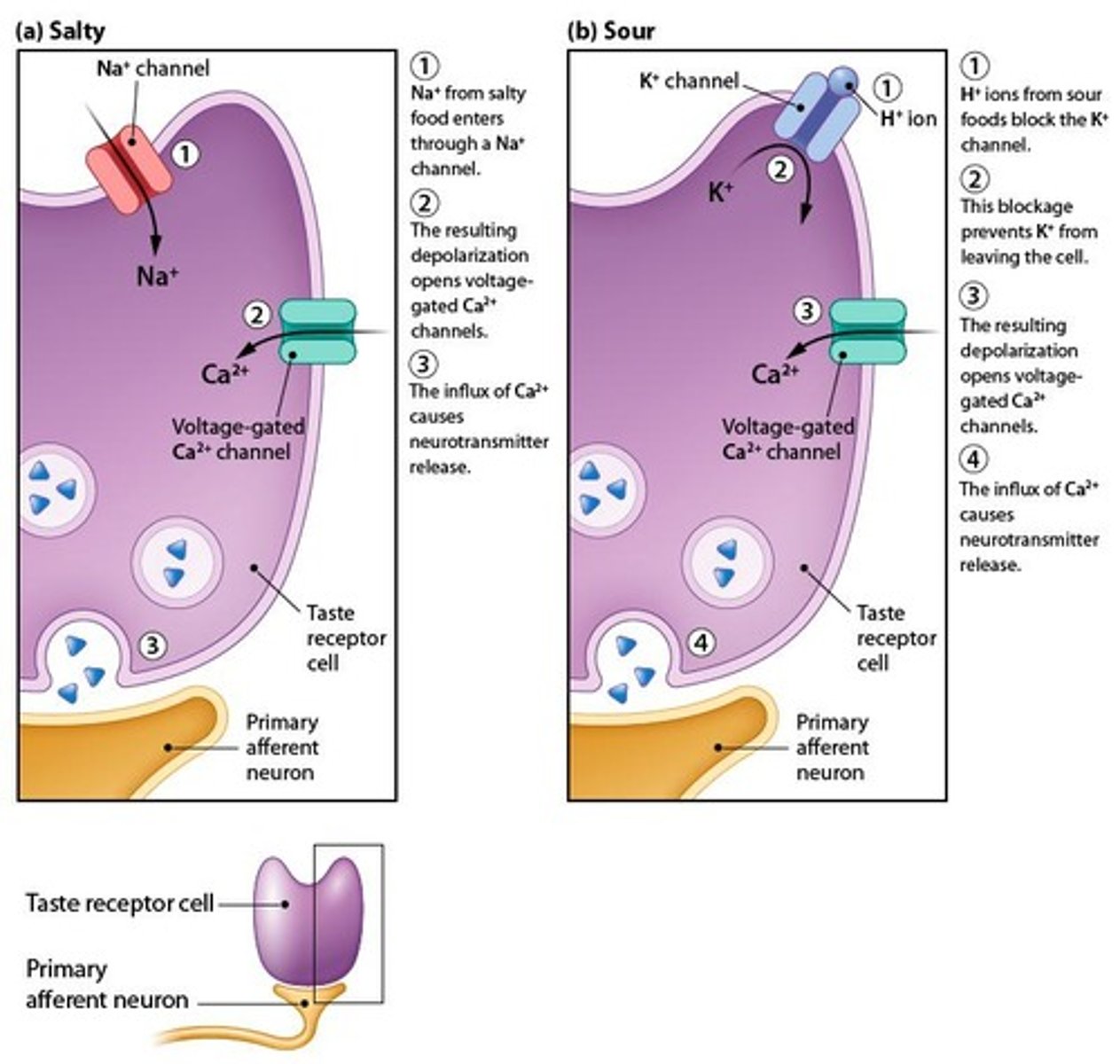
What is the mechanism for sour taste detection?
Free H+ ions bind to and block K+ channels, reducing passive movement of K+ in Type III cells.
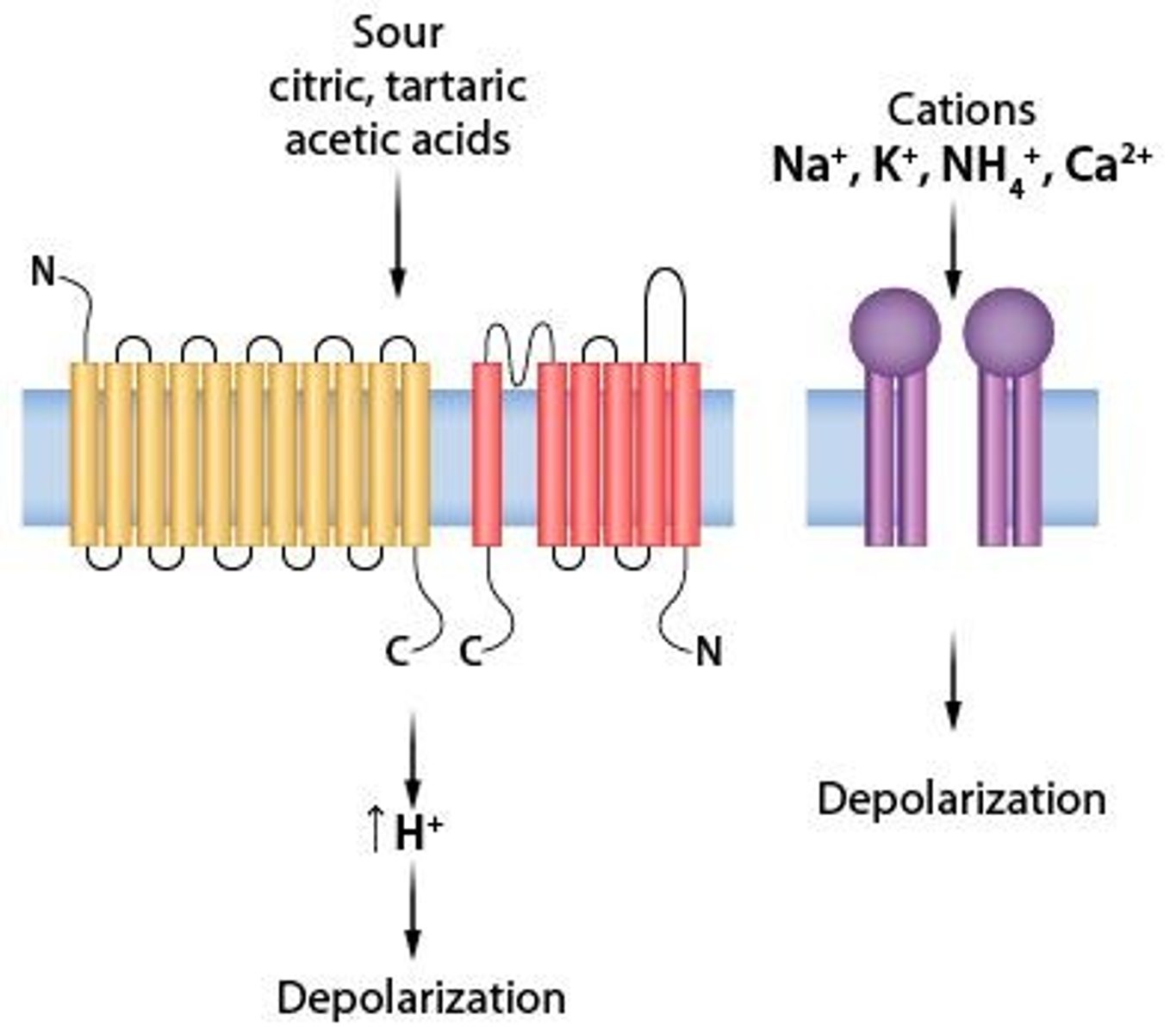
What is the primary taste associated with Type II gustatory cells?
Sweet, activated by glucose through GPCRs.
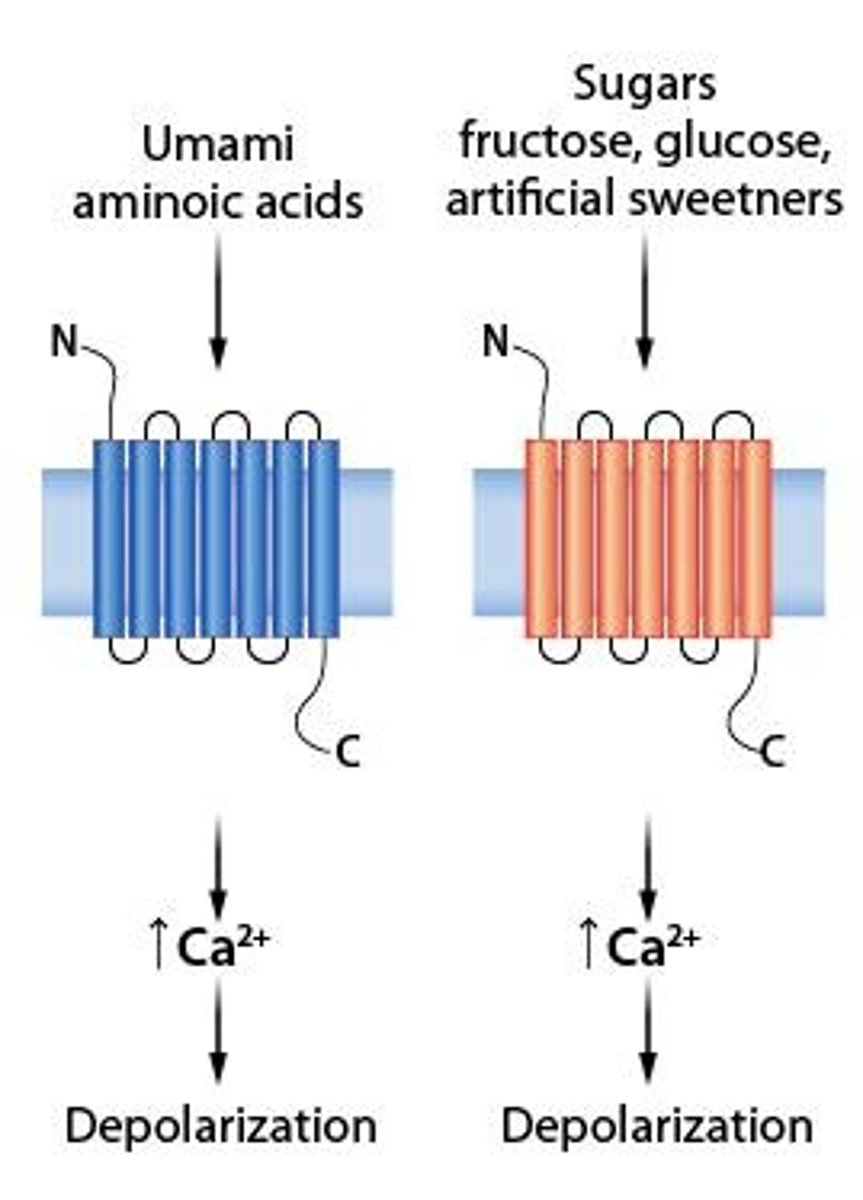
What is umami taste triggered by?
Amino acids, especially glutamate.
Which cranial nerves are involved in the gustatory pathway?
Facial nerve (CN VII), glossopharyngeal nerve (CN IX), and vagus nerve (CN X).
What areas do the axons of gustatory neurons project to?
They project to the Medulla Oblongata, thalamus, and cortical gustatory area.
How does the limbic system relate to taste?
It processes behavioral aspects associated with taste and smell.
What is the primary taste associated with Type III gustatory cells?
Sour.
What is the primary taste associated with Type I gustatory cells?
Salty.
What activates a GPCR to cause depolarization in Type II gustatory cells?
Bitter taste compounds activate a GPCR to cause depolarization through a second messenger cascade.
What type of cells are responsible for detecting bitter tastes?
Type II gustatory cells are responsible for detecting bitter tastes.
How many differing bitter taste receptors do Type II cells contain?
Type II cells contain approximately 50-100 differing bitter taste receptors.
What are the five primary tastes?
The five primary tastes are sweet, sour, salty, bitter, and umami.
What influences taste perception aside from taste receptors?
Taste perception is influenced by information from other receptors, especially olfactory receptors.
What is the significance of the 1901 paper by D. Hänig?
D. Hänig's paper contained data on taste sensitivity in different regions of the tongue, which was later misinterpreted, leading to the myth of the 'tongue map'.
What is a notable receptor related to taste perception besides the traditional taste receptors?
The carbon dioxide receptor is notable for its role in taste perception.
What is the common misconception about taste sensitivity on the tongue?
The myth of the 'tongue map' suggests that different regions of the tongue are responsible for different tastes, which is a misinterpretation of earlier data.
What is the shape of the eye?
Almost spherical organ.
What cushions the eye on its anterior and lateral sides?
Orbital fat.
What are the three principal layers of the eye?
Fibrous tunic, vascular tunic, and nervous tunic.
What structures are included in the fibrous tunic?
Sclera and cornea.
What structures are included in the vascular tunic?
Iris, ciliary body, and choroid.
What structures are included in the nervous tunic?
Retina and optic nerve.
What portion of the electromagnetic spectrum does visible light represent?
A small portion of the total electromagnetic spectrum.
What is wavelength in the context of light?
Distance between two wave peaks, representing energy carried by the photon.
What does amplitude represent in light waves?
Height between the trough and peak, representing the intensity.
What is the function of eyebrows?
Prevent sweat from dripping into open eyes.
What is the role of eyelashes?
Prevent large foreign objects from contacting the anterior surface of the eye.
What are eyelids also known as?
Palpebrae.
What do tarsal glands produce and what is their function?
Produce sebum to prevent tear overflow and adherence of eyelids.
What is the conjunctiva?
Specialized stratified squamous epithelium that lines the external anterior surface of the eye and the internal eyelid.
What are the two parts of the conjunctiva?
Ocular conjunctiva and palpebral conjunctiva.
What is the lacrimal apparatus responsible for?
Produces, collects, and drains tears from the eye.
What are the functions of lacrimal fluids?
Lubricate, cleanse, moisten the eye surface, and provide antibacterial properties.
What is the sclera?
The posterior structure of the fibrous tunic, known as the 'white' of the eye.
What is the function of the cornea?
Allows light to pass into the eye and refracts light.
What are the three parts of the vascular tunic?
Choroid, ciliary body, and iris.
What is the role of the ciliary muscles?
Attached to suspensory ligaments, they alter the shape of the lens.
What is the function of the iris?
Controls the amount of light entering the eye.
What is the pupil?
The opening in the center of the iris through which light passes.
What are the two types of smooth muscles in the iris?
Sphincter pupillae (circular, contractile) and dilator pupillae (radial, dilating).
What are the two layers of the retina?
Pigmented layer and neural layer.
What is the function of photoreceptor cells?
Convert light energy into nerve signals.
What are the two types of photoreceptor cells?
Rods and cones.
What is the optic disc?
The point where the axons of ganglion cells converge to exit the retina, also known as the 'blind spot'.
What is the macula lutea?
The area where light entering the eye is directed, containing the fovea centralis.
What is the function of the lens?
Focuses light onto the retina.
What is accommodation in the context of the lens?
The process of changing the shape of the lens to focus on near or far objects.
What is refraction?
The bending of light as it passes through different mediums.
What are the two types of lenses based on their shape?
Concave (bends light away) and convex (bends light toward a focal point).
What is the anterior cavity of the eye filled with?
Aqueous humor.
What is the posterior cavity of the eye filled with?
Vitreous humor.
What is dark adaptation?
The ability of the eyes to adjust to low light after exposure to bright light.